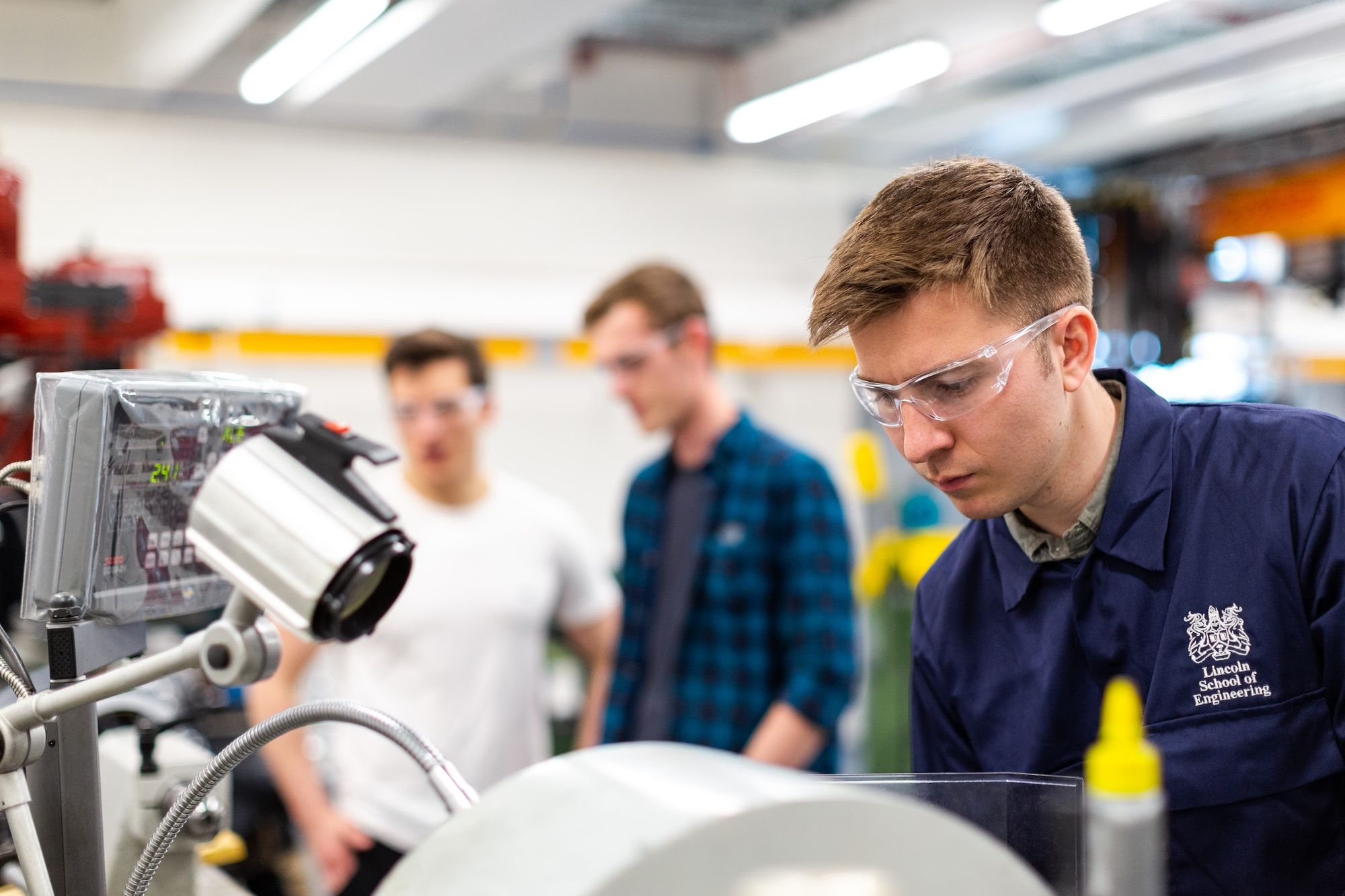The greatest industry in the American economy is manufacturing. It is fundamental to the prosperity of our nation and helps create numerous job opportunities around the country.

The manufacturing sector is today intricately entwined with all other strong industries across the country, from retail to construction, transportation to utilities.
It is not surprising that so many people are aspiring to work in manufacturing or that more than 70% of Americans currently believe it to be the most important industry.
Learning about the most recent technology, trends, and practices in the industry is essential if you are thinking about green manufacturing and want to stand out from the competitors.
This article covers the following:
- What is green manufacturing?
- What are the pros and cons of green manufacturing?
- How to start green manufacturing?
- What are the challenges of green manufacturing?
- How to improve green manufacturing?
- How can Deskera assist you?
What is Green Manufacturing?
Green manufacturing is the renewal of production processes and the establishment of environmentally-friendly operations within the manufacturing field. Essentially, it is the “greening” of manufacturing, in which workers use fewer natural resources, reduce pollution and waste, recycle and reuse materials, and moderate emissions in their processes.
Green manufacturers research, develop, or utilize technologies and practices to lessen their impact on the environment.
What are the Pros & Cons of Green Manufacturing?
The economic benefits of going green (and lean) are significant, and every business that has yet to move in this direction has an opportunity to discover it for themselves. Those who have already taken steps in this direction report many gains.
It has been proven that companies that work on their ESG (environmental, social, and governance) performance, do better financially. A meta-study evaluating over 2000 individual analyses of ESG performance across investment firms between 1970 and 2014 confirms this.
In nearly half of the cases, companies with good ESG performance offered better financial returns. And only 11% showed a negative correlation.
Cost savings
The logic behind this one is straightforward – if you reduce the volume of raw materials and resources you use to produce the final product, you reduce their cost.
Many companies benefit from these savings already by implementing new initiatives like energy-saving (reduce energy costs), pollution reduction (reduce taxes to the government), economical driving (reduce fuel costs), or raw material reuse and reduction (reduce costs of sourcing new materials).
In a survey executed by Deloitte in 2021, almost half of the 750 executives surveyed reported that their environmental sustainability initiatives measurably boosted their corporate financial performance.
Increased Customer Loyalty and Attraction
While price and quality have long been and remain the dominant motivations in consumers’ choice rationale, the expectations have risen on other fronts, too. It is as important as ever for companies to show their responsibility, trustworthiness, and good reputation.
Beyond that, customers are ready to pay extra for sustainable products 85% of consumers have become ‘greener’ in their purchasing in recent years. Making your products greener will help you keep your current customers while helping you attract new ones.
Improved Employee Engagement and Retention
Many of us are acutely aware of the costs associated with attracting and keeping the best employees. With companies competing for talent globally, company values and way of working play an essential role. Employees are concerned with the environment and want to work for companies that share their values.
On top of that, numerous reports show just how important employee engagement is for keeping your teams functional. Working with Lean & Green methodology inevitably will help you engage your team to achieve all of these goals.
Innovation and Development of New Technologies
Going green will push you into looking into new technologies and ways of doing things better. And that is innovation. Striving to become a green manufacturer can’t happen without increased productivity, reduction of lead times, increased capacity, and so on.
For example, if you’re using new technologies to track and measure your OEE, your company will inevitably use fewer resources to produce the same product.
Increased Profit and Shareholder Value
The profitability of going green has been proven in research for years, but it depends on the company’s ability to integrate best-practice sustainability approaches.
In his book “The New Sustainability Advantage”, Bob Willard (an internationally renowned leader in sustainability subject) estimates that if a typical company were to implement best-practice sustainability practices, it could improve its profit by at least 51% to 81% within three to five years.
The business opportunity is related to increased revenue, reduced energy, waste management, water, and material expenses among other factors.
Public Relations
If a company makes an exceptional effort to practice green manufacturing, then it’s only right that they are rewarded and spoken about. The planet needs more and more businesses to become green, and one of the ways we encourage them to do this is by rewarding their efforts.
If your business does a great job at green manufacturing, then you should be talking about it and letting people know the efforts you are making. This can be an extremely useful tool for your public relations and help paint a positive picture of your brand.
A 2019 survey found that 37% of people cite environmental impact as a factor they consider before making a purchase, so making your manufacturing greener can have a big impact on your sales.
As you can see green manufacturing can make a big difference. Asia Pulp & Paper maintains sustainability efforts throughout all business processes. The best businesses are practicing green manufacturing in some shape or form, and if yours is too, you can expect to stand out from those businesses that do not.
Employee Motivation and Recruitment
Public relations doesn’t just help you sell more products. A positive image can give your employees extra motivation because they feel like they are working for a good company and that they’re making a difference.
Even if you don’t particularly like your job, it’s much easier to take satisfaction if you know that the company you’re working for is doing something beneficial for the planet.
If you don’t like your job and you’re working for someone who makes no effort to limit their environmental impact, then it’s hard to find any positives. This also extends to when you recruit new employees. People care about the environment, and when you’re competing with other businesses for talent, your green credentials can make all the difference in attracting the best people.
Tax Benefits
Many state and national governments offer incentives to companies that use green manufacturing methods. The move to go green can have significant upfront costs, but there are lots of incentives to help you make a start.
Governments don’t want huge polluters in their territories, so it’s important for them to encourage manufacturers to use green manufacturing practices. This is something your business can take advantage of, making the transition that bit easier.
Research what options you have available and find out what financial incentives your business can benefit from.
Less Waste
One of the first things you will notice is the fact that far less waste is generated and ultimately, this can lead to massive savings over time. Waste factors into every part of your business. For example, by turning computers off every evening, you will notice savings on your electricity bill each month.
Cutting down on waste can be applied to every aspect of your office. From saving energy (turning off office lights at night), to simply recycling paper, not only are you helping the environment but your bottom line as well.
A Healthier Workplace
By going green, your workplace can become a far healthier environment. This can have a significant impact on man hours and result in a decrease in sick leave taken by staff.
There are benefits in other areas as well such as increased productivity levels and less money paid out for medical benefits. To make your workplace healthier, start small. Provide organic food in the cafeteria and keep the green theme by using cleaning products that are not harmful to the environment.
Cons of Green Manufacturing
Every coin has two sides, similarly green manufacturing has both pros as well as cons. Here are a few cons of green manufacturing that you must make a note of:
Going Green Takes Time
As a well-established company, choosing to turn green is not something that will happen overnight. In fact, it can take some time to implement across the board. Also, it will require constant monitoring and effort to ensure all systems that can be converted, are. The time it does take is worth it in the long run, however.
Initial Costs Can Be High
Although going green is not a new concept, much of the technology associated with it is fairly new and certainly more expensive than conventional technology. This means that steps to become more environmentally friendly can be costly initially.
Take installing solar power for example. This is a costly investment, especially if large systems are needed. Sure there will be many savings made once installed, but initially, costs can be very high.
High Cost of Products
Often, choosing green products over conventional ones will result in more money being spent. This translates straight back to the consumer as the prices of products or services supplied by the organization are increased.
Customer Backlash
Even though customers will, on the whole, be happier that a company has decided on the green route, it is imperative that no false claims are made regarding their green efforts or their products, both intentionally or unintentionally. This is known as “greenwashing” and can lead to a major backlash if found to be untrue.
You May Need to Find New Vendors
Although a company may make an effort to go green, it does not mean that their vendors or suppliers follow these ideals as well. For this reason, organizations will need to research potential new partners that fit into their green values and this can take time and effort.
Complex Business Models
Many business models take one main thing into account profit. When changing to a green outlook, more factors need to be balanced along with the bottom line of the company for example, the companies impact on not only the planet but people as well. So ultimately, going green needs the careful balancing of three factors: profit, planet, and people.
Going Green Takes Effort and Dedication
Along with an extended time to turn a business green, it also takes much effort and intense dedication to do it properly. As with anything in life, choosing to go green has numerous pros and cons.
In the end however, it is well worth the effort in the eyes of most business owners. If you are interested in getting a business loan to help with your green efforts, online options are a great way to go. Doing so allows for happier customers, less damage to the environment, and a business that is sustainable for years to come.
How to Start Green Manufacturing?
Here are few ways in which you can start green manufacturing:
Alternative Energy
An energy audit is a quick and easy way to start creating an eco-conscious facility. This audit takes into account all energy consumption in order to find areas of waste.
After auditing energy use, businesses can determine the best way to correct these losses. Whether it be through energy-efficient lighting or by replacing outdated motors, these small changes can have a big payoff.
Many businesses start this process by switching to LED lighting. These bulbs use 25 to 80 percent less energy and last 25 percent longer than traditional incandescent bulbs. When an entire facility switches to LED lighting, it can have a significant impact on energy costs.
During the energy audit process, manufacturing facilities may also opt to replace their current energy source with a more renewable one. Renewable sources include wind, geothermal, solar, hydropower, and landfill gas.
Companies can choose to generate power using one of these renewable sources. Switching over to a sustainable source may have some upfront cost, but over time, they can be big money savers.
Reduce Waste
Businesses can also go through a waste audit to ensure they’re not disposing of valuable materials. Some raw materials may be recycled or reduced for different projects. Over time, reducing a facility’s overall waste will save money and increase efficiency.
Using Non-Toxic Materials
In addition to reducing waste and conserving energy, many companies are opting to use eco-friendly supplies. These brands are replacing synthetic materials with cleaner, safer ones.
For example, traditional mattress brands use foam made of 100 percent petroleum-based oils. However, to reduce their carbon footprint, environmentally conscious mattresses replace a portion of the petroleum in the bed with plant-based oils. This results in less pollution and ensures the product is safe for consumers.
What are the Challenges of Green Manufacturing?
While green manufacturing can significantly reduce our carbon footprint, it can be difficult for companies to do it cost-effectively. Possibly their biggest challenge will be competing with companies overseas that don’t live up to the same standards.
Many of these companies don’t think anything of the environment, which allows them to keep their operating costs low. This is particularly problematic in China and other emerging economies in Asia.
As these countries scale their manufacturing industries, they are going to create a larger carbon footprint. Fortunately, many of these countries are beginning to recognize the concerns global warming is creating.
China recently shut down 40% of its factories to minimize pollution. However, the remaining factories are unlikely to operate within acceptable U.S. emission guidelines. This means that one of two things will need to happen:
- Factories in the United States will need to make a business strong case to consumers that they should purchase their products rather than those imported from Asia.
- New trade deals will need to place high excises on products from these countries.
Green manufacturers should be able to thrive, but we will need to implement these practices quickly enough to prevent further damage to our environment.
How to Improve Green Manufacturing?
Better communication improves operations. And real-time, mobile communication is becoming an increasingly popular way to enable frontline manufacturing workers.
Communicating in Real-time has Multiple Benefits
- Alerting other workers of any hazards and equipment failures which is critical for safety
- You can keep the manufacturing pace high by communicating important messages (like shift-changes) fast
- It saves time and money by being able to send (and receive) messages instantly (no bulletin boards)
- Improves coordination between employees
- Improves coordination between employees and managers
- Enables employees to manage AI, robots, and cobots using mobile tech tools
According to Deloitte, 77% of manufacturing companies see “online collaboration platforms” as tools that will significantly impact their workforce in the next five years.
A digitally connected workforce is faster, safer, more productive, and greener. And the mobile-first communication tools allow employees to become partners with their peers, managers, and even machines.
This also rebrands the manufacturing plants into green, tech-advanced plants that attract the attention of the new people inside the workforce— millennials.
Implement Eco-friendly Products
According to the U.S. Bureau of Labor Statistics, millennials will make up around 75% of the entire workforce by 2030. So in a matter of 10 years, you will have a workforce that deeply cares about sustainability in the workplace, and companies will have to adjust how they operate to attract the next generation of manufacturing workers.
One of the best ways to encourage going green in a manufacturing plant is to implement eco-friendly products. Not only are these products more sustainable, but they also cut costs for the company at the same time. Lighting systems are a great example of this.
Being mindful of lighting systems can really affect your monthly electricity bill and even save up on energy. One way to do this is to change incandescent lights into LED lights.
Not only are they more effective (last 25 times longer than incandescent), but they are a green solution since they use 75% less energy than regular lights. That makes a massive difference on the scale of manufacturing plants, especially in the long run.
Taking small steps towards creating a more sustainably run manufacturing plant can have a big impact in the long run and get your company that much closer to being completely green.
Optimize your Current Use of Fossil Fuels
This is a given. Cutting energy cost is a win-win situation in today’s environment. There seems to be little argument that we are close to “peak oil,” i.e., availability, when half of the world’s known oil reserves have been consumed.
The only argument left is when the supply crunch will start, or if it has already begun. Save now by turning off machinery when it is not being used. Replace a single-speed motor with a variable-speed or servo drive to reduce energy consumption.
Use a variable-speed hydraulic pump. Also, take a look at other alternative sustainable sources of energy — whether that’s wind, solar, or hydroelectric power.
Eliminate Waste
Another no-brainer. Consume only the supplies and resources that you need to produce the finished product. Sounds very simple to us today, but I think we all know that, in the past, our primary objective was to reduce production costs or time to market.
Nobody knew or cared whether we were using more resources than we needed. This applies to every industry whether it’s the amount of metal, paper, packaging material, etc. used.
Re-evaluate whether or not the choice of investing in precision manufacturing equipment can be justified by looking at the ways it may introduce opportunities for waste reduction.
Reduce, or Eliminate Pollution
Lately, whenever I meet colleagues at conferences or trade shows, one of the hot topics is how to reduce the use of “environmentally unfriendly” materials in production, as well as by-products of manufacturing processes.
I hear renewed interest in dry, or near-dry, machining, using as little coolant as possible while performing metal removal. Or de-burring, taking the burrs off of finished material after it’s been cut, another process that uses quite a few powerful chemicals.
Recycle
Look at the amount of metal chips that are made in machining and finishing processes. People used to just fill up huge hoppers, and haul them to a recycling facility.
Now they’re starting to look at the cost of energy involved in all this. One solution is “chip puckers,” devices that compress chips, remove the coolant, and form the metal into “hockey pucks,” which are a lot easier to transport and require a lot less energy. Or, even better, they could invest in equipment for handling the chips in-house, such as processing them into small billets that can be recycled on site.
Recover Energy, Don’t Turn it Into Heat!
Hybrid cars recover energy that otherwise is wasted during braking; did you know machines can do it too? Power sharing has its roots in machine tools, where the servos used in metalcutting machines and seam machines share power through a single power supply.
We can actually take power during deceleration and return it to the main lines. In the past, that energy was wasted, turned into heat, like the brakes on a car. Another great example is the way some operations are able to coordinate the cycles of several metal presses.
At first you might think, “Have all the presses go up and down together and then move the material.” But, we’ve found that if you skew the cycles slightly, you can use the decelerated, regenerative power in one press to help accelerate the other one.
That has no effect on the process time, no effect on the cycle time, and it doesn’t cost more, but it saves energy. We’ve started to apply our knowledge of shared servo power to other industries like packaging machinery, automation, and printing presses.
Use Circular Manufacturing to Save Energy and Reduce Waste
Manufacturing equipment and companies are becoming more sustainable by creating a regenerative model that fuels their facilities. Circular manufacturing is also called lean manufacturing and it includes:
- Recovering resources and repurposing the materials
- Lending equipment as a part of the sharing economy
- Using predictive maintenance to increase the lifetime value and durability of machines and equipment
- Switching to a renewable power source that provides energy to the factories
Circular manufacturing is a green solution with a three-fold win
- It follows “green” rules and regulations.
- It’s good for the planet
- It’s what the end customers want
Instead of purchasing raw materials for themselves, green plants simply use the waste produced by another plant (water, energy, and other resources) to meet their needs.
A great example of this is Kalundborg Symbiosis, a group of nine manufacturing companies from Denmark who have been trading waste since 1961. Annually, they save 24 million EUR and reduce carbon emission by 635,000 tons.
Implement Safety Measures by Utilizing Automation Tools, AI, IoT, and Cobots
The cloud-based technology, alongside the Internet of Things (IoT) will provide the ability for humans to work alongside automation tools, AI, and cobots, and is one of the ways for companies to go green.
Cobots, or collaborative robots, are intended to work alongside humans in a shared space to complete tasks. IoT will help us navigate the entire manufacturing process, enabling humans to coordinate dangerous jobs with robots. And this is where cobots come into play.
The manufacturing industry has some of the highest rates of on-the-job safety incidents, with an estimated average of 400,000 non-fatal injuries per year. To avoid these injuries and prevent further harm, AI and cobots will perform dangerous tasks and that will decrease the number of injuries per year. That will turn factories into safer work environments.
But that’s not the only benefit. The increased safety measures will result in less downtime for employees and it will reduce the machine reparation downtime since they will go through predictive maintenance.
Productivity will rise (40% by 2035) and there won’t be the (energy) costs of restarting the machines, all the while creating a safer work environment for humans. But that can only be fully implemented with digitized, internal communication.
Digitize Internal Communication
By making all internal communication 100% digital, you’re not only saving tons of paper each year, but you’re also making your overall operations more efficient.
How Can Deskera Assist You?
Regardless of how you feel about eco-friendly manufacturing, it would be best to consider investing in technology that will help the environment in the future. Deskera is one such inventory management system. Deskera inventory software allows you to closely monitor the manufacturing process and overall improves your performance.

Key Takeaways:
- Green manufacturing is the renewal of production processes and the establishment of environmentally-friendly operations within the manufacturing field.
- Green manufacturers research, develop, or utilize technologies and practices to lessen their impact on the environment.
- The economic benefits of going green (and lean) are significant, and every business that has yet to move in this direction has an opportunity to discover it for themselves.
- Going green will push you into looking into new technologies and ways of doing things better.
- During the energy audit process, manufacturing facilities may also opt to replace their current energy source with a more renewable one.
- Manufacturing equipment and companies are becoming more sustainable by creating a regenerative model that fuels their facilities.
Related Articles:













